Left: Cayuco Maya, the venue for the XV Vision Council, “Call of the Water,” was held on the shores of Bacalar Lagoon. Foreground: The Rainbow Peace Caravan’s Circus Tent has been a trademark gathering space for two decades in Vision Councils from Peru to Mexico.
BACALAR, Quintana Roo, Mexico — The XV Vision Council – Guardians of the Earth gathering drew more than 600 participants from 27 countries and representatives of nearly a dozen indigenous nations to the shores of this pristine yet imminently threatened Caribbean lagoon. This time, the weeklong itinerant gathering chose the Yucatan Peninsula for its venue, and it was the “Call of the Water” that convoked activists, ecologists, healers, artists and indigenous and community leaders to generate proposals and solutions to environmental problems that endanger the lagoon as well as the Great Maya Aquifer, the second largest reserve of fresh water in the country.

As always, the Council was organized through nine thematic councils, each one offering a separate series of activities – workshops, forums, working groups, performances – that seek to promote a better relationship between human beings and the natural world: The Councils of Ecology, Education, Social Movements, Art and Culture, Health, Spirituality, Natural Time, Youth, and Children.

Within the framework of this event, several roundtables were organized, including a working group held with the participation of representatives of the municipal and state governments, civil society organizations and various key actors who met with the objective of creating agreements and strategies to promote the sustainable management of the territory, which is currently at risk because of the lack of environmental protections, adequate wastewater treatment management and a sustainable urban development plan that take into account the fragility of the local coral-based karst topography and the fragility of the rare Bacalar lagoon ecosystem.
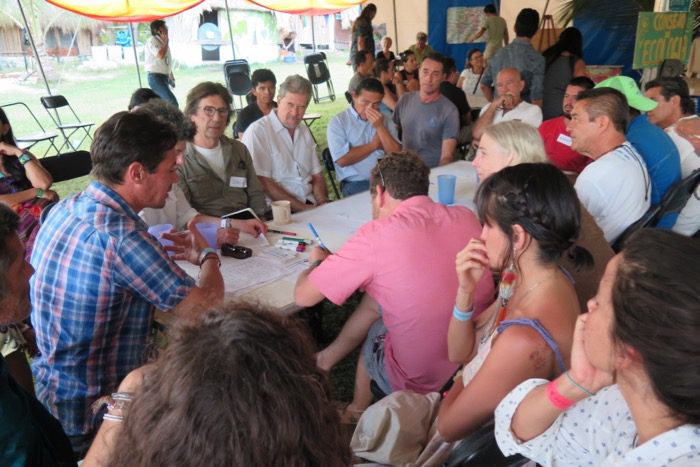
The Ecology Council’s roundtable/work session featured a series of breakout groups to generate solutions toward sustainable development in the region. Researcher Héctor A. Hernández, director of the South Border College (ECOSUR) Chetumal unit, discussed research revealing a high level of connectivity of the lagoon system of southern Quintana Roo, illustrated with a “Coastal Transverse Corridor” model, and commented on the extreme importance of careful management of three ecosystems in particular: the Mesoamerican Barrier Reef system, the world’s second largest, that depends on the carbonates from the aquifer below Bacalar; the mangroves in the freshwater lagoon (rare, because mangrove is generally found in saltwater habitats); and the largest and oldest stretch of stromatolite structures in Mexico, dating back more than 9,000 years and one of few such structures that are actively reproducing, according to Dr. Luisa Falcón, researcher at the National Autonomous University of Mexico (UNAM).
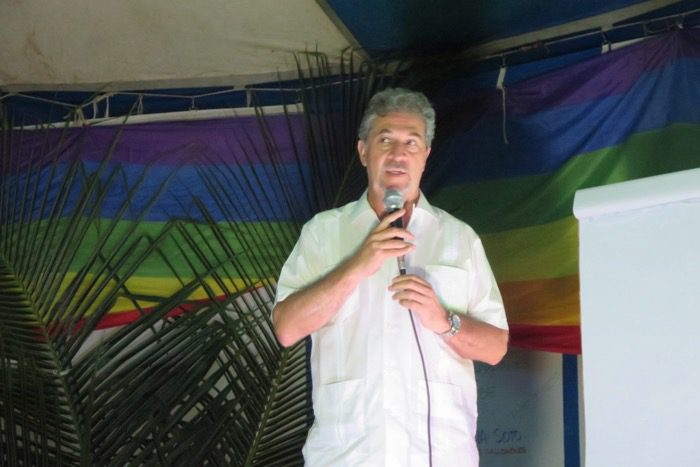

During the meeting, different “eco-techniques” were utilized in order to demonstrate that it is viable to create sustainable human settlements in which the human being lives in harmony with nature, generating minimal environmental impact. The goal of the Vision Council gatherings is always to leave the venue in better condition than when the meeting began. To that end, participants used dry toilets, solar energy, composting, recycling, and a wetlands system for treatment of graywater, all installed by participants. In addition, only biodegradable repellents, skin care and cleaning products were permitted on the premises.
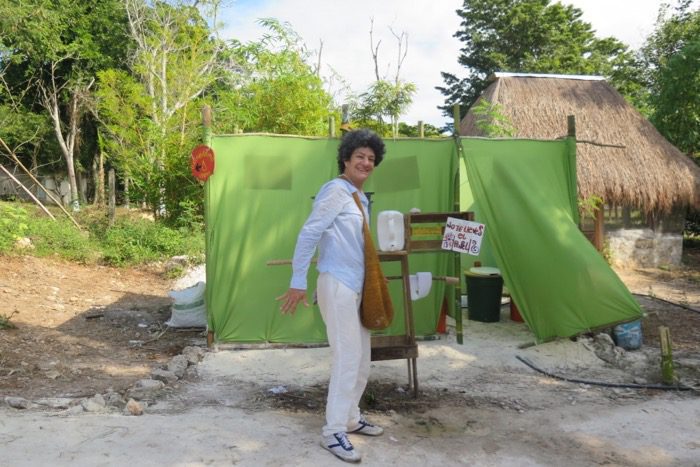
While the Ecology Council worked to resolve threats to the region’s water, the Children’s Council organized a day of educational activities in the town of Bacalar, including a search for the lost pirate’s treasure in the lagoon on a regatta of sailboats (upshot: the lagoon IS the treasure), and a children’s theater performance featuring mangroves and stromatolites (the primeval cyanobacteria formations found in the lake).
The Art and Culture Council organized a series of talent shows in the encampment and culminated with two free concerts in the town of Bacalar’s main amphitheater, featuring major artists such as Lengua Alerta, Olinka, Navajo songwriter and poet Lyla June Johnston, Telhuane y Mexikan Soundsystem, and regional rising stars from the ADN Maya (Mayan DNA) collective. The new videoclip-discourse “Alerta Bacalar” (Bacalar Alert), produced by Olinka and Gran Om, had its world premiere.
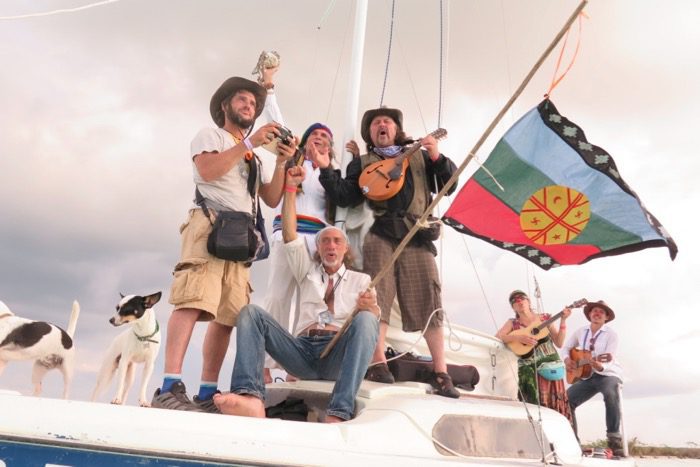
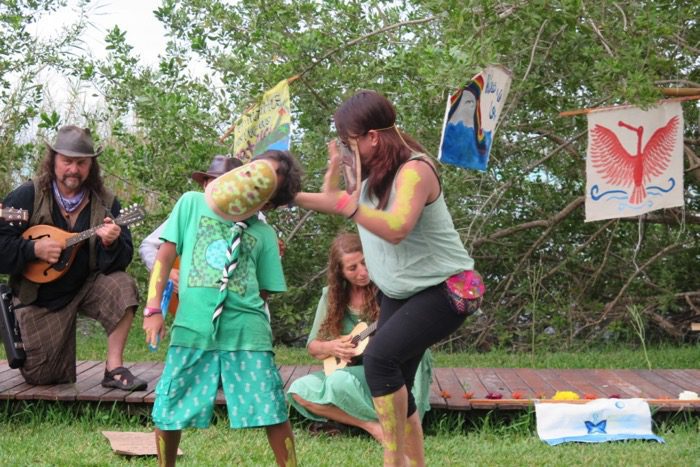
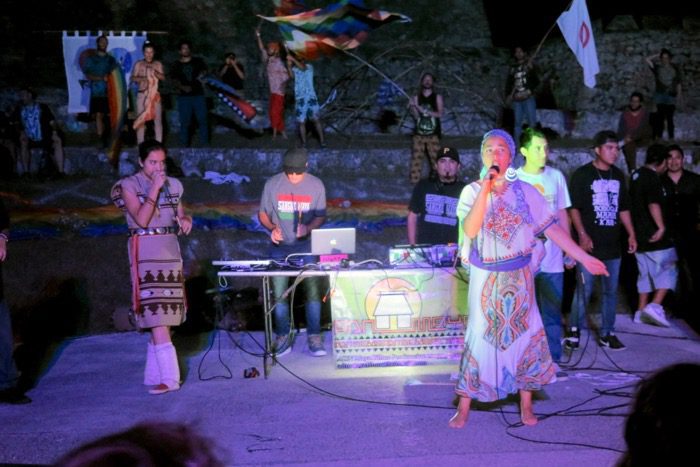
The Spirituality Council hosted indigenous elders, healers and teachers from nearly a dozen nations, including Standing Rock activist and Sacred Stone Camp spokesperson Cheryl Angel, Diné recording artist and activist Lyla June Johnston, Hopi elder Ruben Saufkie Sr. of the Water Clan and Maya elder Francisco Javier Mass Padilla, founder of a new university for herbal medicine. Seven days of ceremony culminated in a high-energy Water is Life ceremony featuring Cynthia Valenzuela on the Water Harp.

The Vision Council – Guardians of the Earth chooses a different bioregion for each event, seeking to influence the local population in a proactive way. The goal is to support local communities in moving toward sustainable and resilient land and water management. In the case of Bacalar, the focus was on promoting biologically sensitive alternatives that in turn promote sustainable tourism and agriculture as the economic engines of the region and thus ensure a clean and transparent lagoon for present and future generations.
For more information, see the Vision Council website here; the organizing Consejo Semilla or Seed Council can be reached at [email protected].
See a photo gallery here. Photos available in high resolution upon request.
Ana Ruiz Diaz Bacalar Call of the Water Guardians of the Earth Lagoon of Seven Colors Vision Council